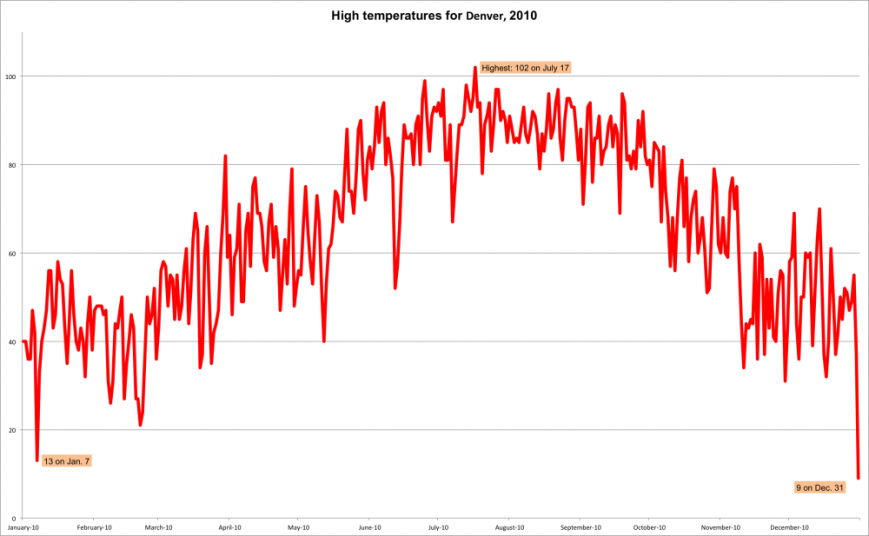When I first encountered Snow Fall in 2012, I wasn’t sure what to make of it. I appreciated the out-of-the-box approach to online news design, but I felt that I couldn’t give the presentation a fair shake because of the way I like to read long pieces like these. Just as I got into the rhythm of the story, I found my attention diverted to sidebar items that competing for primacy. I have to stop and make decisions and guess about the editor/writer/producer’s intentions. Will seeing this particular slideshow at this point in the copy add to my understanding of the text I just read? Is the exposition contained in the avalanche science video necessary to comprehend what comes next, or just extra information for those who want more scientific underpinnings at that point in the story? Were these multimedia items chosen for insertion at this particular point because they are setting up the a narrative, or did they make a design decision to insert something at this particular point of the page? This multimedia format grafted on to the structure of a traditional narrative story worked less well for me than other non-linear multimedia stories I have seen. When enveloped in a narrative, I want to forget that I am reading and just experience the story. I don’t want to be pulled out of the reverie by links and sidebars. It was gratifying, then, to learn that I was not the only one to have issues with Snow Fall’s magnificence. Roy Peter Clark agrees with me on many points, and makes some additional notable arguments that the multimedia items burgle the narrative.
Is literary journalism the last, best hope of newspapers? I would argue that it is not the whole answer, but perhaps part of it. I believe that newspapers have one advantage over faster media, which is that they can cover local issues in a way no other medium can or will. Television and radio formats don’t allow for a long look at anything. That look doesn’t have to be literary, but it does have to be longer than a 60-second story to really knit a community together. I believe this gets to the point of Voices of a Nation more than the style of writing does. After all, we are not so much exploring what it means to be American, a mythic and monolithic class that may or may not exist, but what it means to be part of our smaller, more knowable corner of the world. The New York Times I receive on Sundays covers all kinds of news, but it is still very much about what it is like to be a New Yorker. If it stopped being that, I would be less interested…and I’m not even a New Yorker. In local and regional outlets, the shaping presence of the writer has as much to do with their individuality as their geography.
So how important is a writer’s position on the lit-J continuum? Here’s one version:
<–Agee Capote Wolfe Didion Crane Orwell Ross Mitchell McPhee Hersey–>
I didn’t approach this class feeling that it was necessary to strictly define literary journalism. I wanted to learn more about its techniques so that I could use what was helpful, compelling and boundary-pushing in my own work. But I don’t want to push boundaries for the sake of pushing boundaries, only to make it more interesting and compelling to readers. Some of what we read this semester puts artistry ahead of reader experience, and while that’s interesting from an artistic perspective, I don’t admire it. It smacks of showing off.
Class summary: Overall a good experience. Class discussions were interesting and taking turns leading them worked well. I liked the small size of the class and having interesting classmates. International perspectives from your overseas experiences were a welcome addition. Readings were varied and well written, though I didn’t get much from reading or writing about The Emperor. The readings seemed a bit top-heavy in the early history of literary journalism at the expense of more modern pieces.
Mechanics: I appreciated the affordability of the books and the fact that we used all of them thoroughly. I’m not sure why the syllabus said to bring a laptop or tablet to every class when we never used it. Ditto with printing the blog posts. Why not just use the laptop or tablet to refer to the blog posts if we are bringing them to class? The mandated Tumblr and Twitter follows were a lot of extra reading that we didn’t address in class. The “On Writing” readings were some of the most interesting ones, but we didn’t write about or discuss them. Having fewer history and/or literary journalism readings would open up time for more emphasis on those.
2) Link
http://blog.longreads.com/2013/09/27/required-reading-from-journalism-professors/
Check out #6!
3) DQ
If you could have the literary talents of one writer from the syllabus, who would it be?
Alisson Clark
alissonc@ufl.edu

